
Test- clasa a VII-a- Glande endocrine
- Subject:
- Anatomy/Physiology
- Material Type:
- Homework/Assignment
- Author:
- Ofelia Dumitru
- Date Added:
- 01/12/2020

Test- clasa a VII-a- Glande endocrine
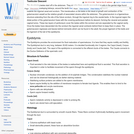
This section describes testicular development in embryonic animals.

Test- clasa a VII-a Organe de simț

Thermoregulation is the ability of an endothermic organism to maintain a relatively constant body temperature, despite fluctuations in temperature of the external environment. This is a vital part of homeostasis.
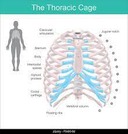
Sternum anatomy and ribs of the thoracic cage.

Understanding the structure of a muscle cell. Created by Rishi Desai.
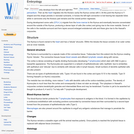
The thymus has a key role in the maturation of prothymocytes into mature T cells. In juvenile animals the thymus produces significant numbers of new T lymphocytes but as the animal matures this production decreases and T cell population is maintained by division of mature T cells.
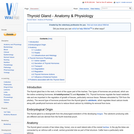
The thyroid gland lies in the neck, in front of the upper part of the trachea. Two types of hormones are produced, which are the iodine containing hormones; tri-iodothyronine(T3) and thyroxine (T4). Thyroid hormones regulate the basal metabolic rate and are important in the regulation of growth of tissues, particularly nervous tissue. Release stimulated by TSH from the pituitary. The second type of hormone produced from the thyroid gland is calcitonin, which regulates blood calcium levels along with parathyroid hormone and acts to reduce blood calcium by inhibiting its removal from bone.

This resource is a video abstract of a research paper created by Research Square on behalf of its authors. It provides a synopsis that's easy to understand, and can be used to introduce the topics it covers to students, researchers, and the general public. The video's transcript is also provided in full, with a portion provided below for preview:
"These microscopic roundworms have a lot to teach us about how general anesthesia works. In case you didn’t already know, the effects of anesthesia on the brain are largely a mystery. That’s right. For nearly two centuries, putting people under and bringing them back safely has remained more an art than exact science. And it isn’t for lack of trying. Brain research in this area has followed two main tracks. Some researchers have used techniques like EEGs or fMRI to monitor neuron activity across entire regions of the brain. Others have analyzed individual chemical receptors to spot molecular-level interactions with anesthetic gases. The problem is that little has been done in between, at the level of individual neurons. Now, researchers have found a way to do that. Their method: attaching tiny light bulbs to single brain cells in roundworms and watching how they light up under anesthesia..."
The rest of the transcript, along with a link to the research itself, is available on the resource itself.
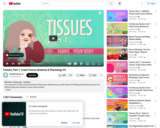
In this episode of Crash Course Anatomy & Physiology, Hank gives you a brief history of histology and introduces you to the different types and functions of your body's tissues.
Chapters:
Introduction
Nervous, Muscle, Epithelial & Connective Tissues
History of Histology
Nervous Tissue Forms the Nervous System
Muscle Tissue Facilitates All Your Movements
Identifying Samples
Review
Credits
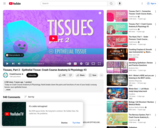
Today on Crash Course Anatomy & Physiology, Hank breaks down the parts and functions of one of your body's unsung heroes: your epithelial tissue.
Chapters:
Introduction
Proper Epithelium & Glandular Epithelium
We're All Just Tubes!
Cell Shapes: Squamous, Cuboidal, or Columnar
How Form Relates to Function
Layering: Simple or Stratified
Epithelial Cells: Apical & Basal Sides
Glandular Epithelial Tissue Forms Endocrine & Exocrine Glands
Review
Credits
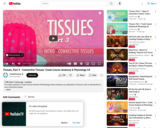
On today's episode of Crash Course Anatomy & Physiology, Hank continues our exploration of tissues, with an introduction to your connective tissues.
Chapters:
Introduction
What is Connective Tissue?
Four Classes of Connective Tissue
What Makes Connective Tissues Different From Other Tissue Types?
The Extracellular Matrix
Types of Fibers
Connective Tissue Cells
How Marfan Syndrome Affects Connective Tissue
Review
Credits
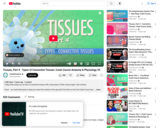
Today Hank wraps up our look at connective tissues with a discussion of their various types. Also chicken.
Chapters:
Introduction: We're All Just Meat
Loose vs. Dense Connective Tissue Proper
Types of Loose Tissue Proper: Areolar, Adipose, and Reticular
Types of Dense Tissue Proper: Regular, Irregular, and Elastic
Types of Cartilage: Hyaline, Elastic, and Fibro
Types of Osseous (Bone) Tissue: Spongy and Compact
Blood is a Connective Tissue
Review
Credits

Tissues of the human body. Overview of the Muscle, epithelial,nervous and connective tissue.
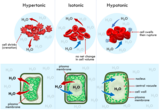
This is an illustration of environmental tonicity conditions for animal cells and plant cells. The response of red blood cells and platn cells to hypertonic, isotonic, and hypotonic conditions is indicated.
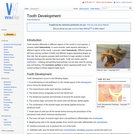
Teeth develop differently in different regions of the mouth in most species, a process called heterodonty. In some animals, teeth develop identically in different regions of the mouth, a process called homodonty. Different species will have varying numbers of teeth and different shapes depending largely on their diet. Not all species possess teeth and there is huge variation in dental formulae between the species that have teeth. Teeth are mainly used for mastication - chewing and grinding food particles, but are also used for seizing prey and tearing. The occlusion surface is where opposing teeth touch. The contact surface is where adjacent teeth touch.

This resource is a video abstract of a research paper created by Research Square on behalf of its authors. It provides a synopsis that's easy to understand, and can be used to introduce the topics it covers to students, researchers, and the general public. The video's transcript is also provided in full, with a portion provided below for preview:
"Recent studies have shown that all-inside repair of meniscal ramp lesions can restore normal knee motion. But it has remained unclear how ramp lesion repairs affect ACL in situ forces and bony contact forces. To remedy that, researchers from the University of Pittsburgh recently used a robotic system to examine these forces in intact knees, knees with ramp lesions, and knees with ramp lesion repairs. Their findings, reported in the November issue of the American Journal of Sports Medicine, suggest that the indications for ramp lesion repair may be limited. The team looked at nine knees from human cadavers, each tested using a six-degree-of-freedom robotic system. The knees were continuously flexed from full extension to 90° under five different loads: an anterior load, an external-rotation torque, a combined anterior and compression load, and a combination of external- or internal-rotation torque and compression..."
The rest of the transcript, along with a link to the research itself, is available on the resource itself.
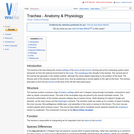
The trachea is the tube linking the cricoid cartilage of the larynx to the bronchi, forming part of the conducting system which transports air from the external environment to the lungs. The oesophagus lies dorsally to the trachea. The cervical part of the trachea lies generally in the median position, although this varies slightly depending on the position of the head. The thoracic part of the trachea crosses the aortic arch, thus its positioning is moved slightly to the right at this level. The trachea bifurcates to form the two bronchi at the level of the 4th-6th intercostal space.
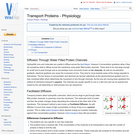
Hydrophillic ions and molecules are unable to diffuse across the lipid bilayer. However if concentration gradients allow it they are sometimes able to diffuse across the membrane using water filled protein channels. These tend to be only large enough for small ions to pass through and so are perhaps more commonly known as ion channels.
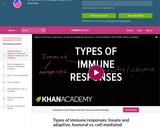
Innate vs. adaptive immunity. Humoral adaptive immunity vs. cell-mediated adaptive immunity. Created by Sal Khan.